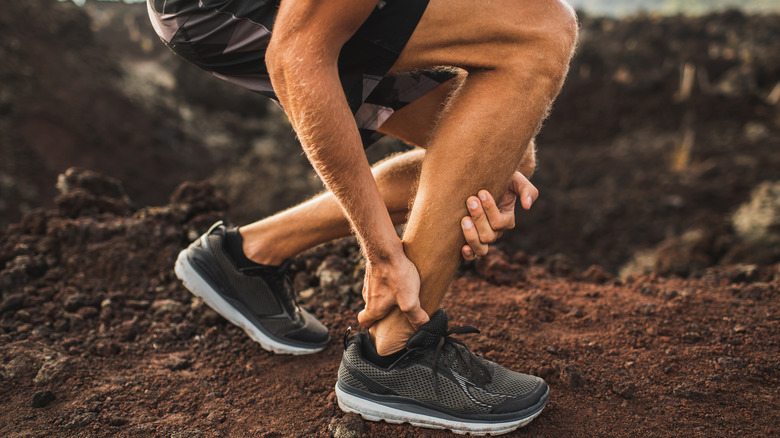Here's How You Can Avoid Soft Tissue Injuries
Injuries to the soft tissues are the most common in both sports and everyday life, according to the American Academy of Orthopaedic Surgeons. Soft tissues, such as our ligaments, muscles, and tendons, can get injured during a single incident like a fall, or from repeating a specific motion, such as running. Soft tissue injuries include spraining a joint like your ankle or straining a muscle such as a hamstring (via Sports Medicine Australia). Tendinitis, which is one of the most common overuse injuries, occurs when a tendon is continually stressed, causing inflammation and pain (via the American Academy of Orthopaedic Surgeons). You could also suffer from bursitis, which is when the sac of cushioning between bones and soft tissues gets inflamed from repetitive movements.
Although falling, sharp twisting, or continually stressing your body can cause a soft tissue injury, other factors can contribute to your likelihood of getting injured. If you've been injured before, you're more likely to be injured again if your body hasn't fully recovered (via Sports Medicine Australia). According to a 2017 study in the Scandinavian Journal of Medicine & Science in Sports, elite adolescent athletes who didn't get the recommended amount of sleep or nutrition were more likely to sustain an injury. A 2021 study in Current Sports Medicine Reports found that those who habitually slept less than seven hours a night were 1.7 times more likely to be injured.
Preventing soft tissue injuries
The American Academy of Orthopaedic Surgeons suggests several methods to prevent these kinds of overuse injuries, strains, and sprains. If you're doing any form of exercise, it's best to do a proper warm-up to raise your heart rate slowly and loosen up the soft tissues. You'll also want to keep up your hydration before, during, and after your workouts. Before exercise, be sure to drink a pint of fluid, then drink after roughly every 20 minutes of exercise. After your workout, drink at least another pint of water. You'll also need to cool down the heart rate and muscles after your workout, so take some time to reduce the speed or intensity of your workout — twice as much time as you took warming up. Gentle stretching for about five minutes after a workout can help cool down the body, according to the National Health Service.
If you exercise often, pay attention to your body and know when it's time for a rest day, according to the American Academy of Orthopaedic Surgeons. On the other hand, if you only work out on the weekends, aim for about 30 minutes of movement each day to keep the soft tissues healthy. If you're new to exercise or are adding different exercises to your program, incorporate these exercises slowly into your routine. You'll also want to add a balanced approach to fitness by including cardiovascular training, strength training, and flexibility into your plan.


